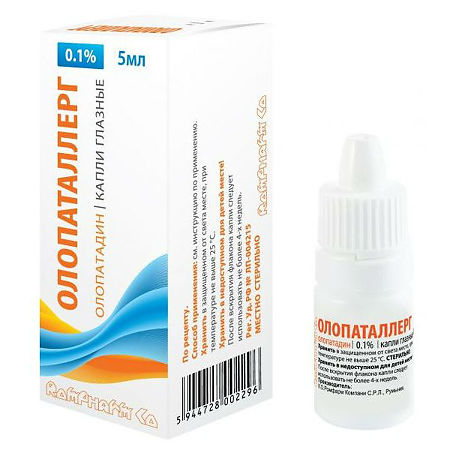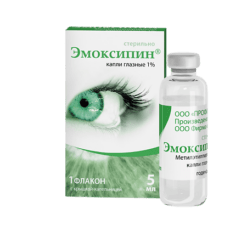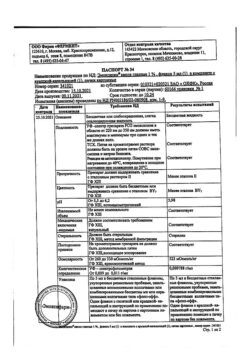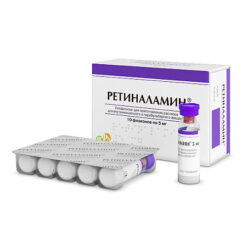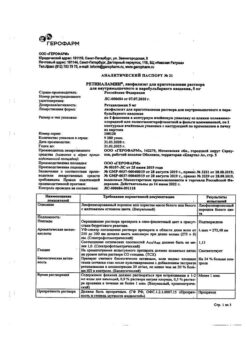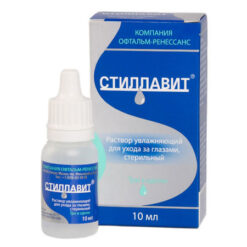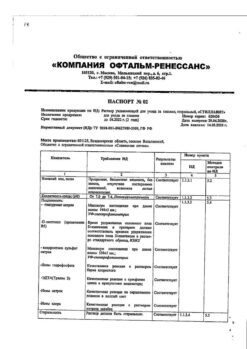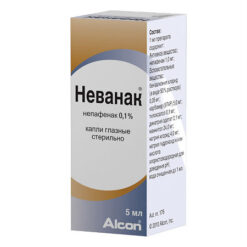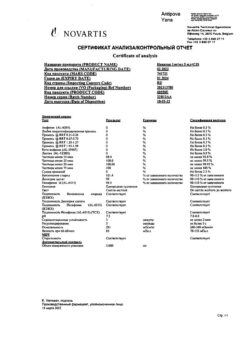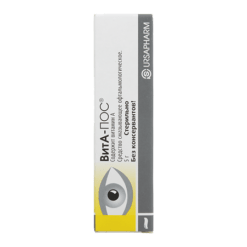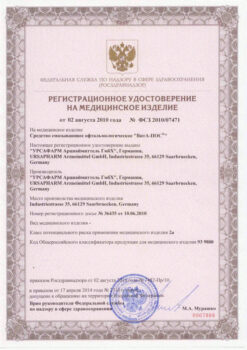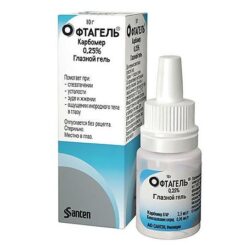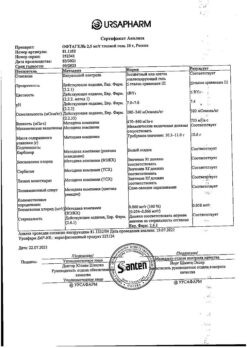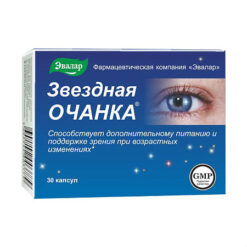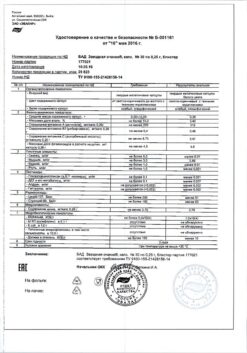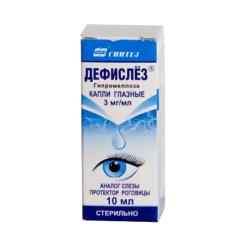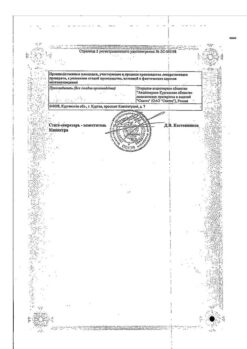No products in the cart.
Olopatallerg, eye drops 0.1% 5 ml
€15.77 €13.14
Description
Increased tear production, Red eyes, Allergic conjunctivitis, Allergy, PollinosisTreatment of symptoms of seasonal allergic conjunctivitis.
Indications
Indications
Treatment of symptoms of seasonal allergic conjunctivitis.
Pharmacological effect
Pharmacological effect
Antiallergic H1-histamine receptor blocker
Special instructions
Special instructions
Olopatadine hydrochloride is an antiallergic/antihistamine drug for topical use in ophthalmology, and, despite topical application, can be absorbed into the systemic circulation. If severe hypersensitivity reactions occur, discontinue use of the drug.
The drug contains benzalkonium chloride, which can be adsorbed by soft contact lenses and cause eye irritation. It is necessary to remove contact lenses before instillation and reinstall them no earlier than 15 minutes after instillation of the drug.
With frequent or long-term use of the drug, benzalkonium chloride may cause the occurrence of punctate keratitis or toxic ulcerative keratopathy in patients with dry eye syndrome or corneal pathology.
Impact on the ability to drive vehicles. Wed and fur.:
Olopatadine does not have a significant effect on the ability to drive vehicles or operate machinery. If blurred vision is noted immediately after instillation, it is necessary to wait until the clarity of visual perception is restored before operating vehicles and machinery.
Active ingredient
Active ingredient
Olopatadine
Composition
Composition
1 ml – olopatadine hydrochloride 1.1 mg, which corresponds to the content of olopatadine 1 mg.
Pregnancy
Pregnancy
Fertility
There have been no studies of the effect of topical ophthalmic olopatadine on human fertility.
Pregnancy
There is no or limited information on the topical use of olopatadine in ophthalmology by pregnant women. Animal studies have provided evidence of the toxic effects of olopatadine on reproductive function when administered systemically. The use of olopatadine is not recommended during pregnancy and in women of childbearing age who do not use contraceptive methods.
Breastfeeding period
Excretion of olopatadine into breast milk has been observed when using the drug in animals. A risk to newborns and infants cannot be excluded. The use of the drug Olopatallerg during breastfeeding is not recommended.
Contraindications
Contraindications
Hypersensitivity to the components of the drug, pregnancy and breastfeeding, age up to 3 years.
With caution:
In patients with concomitant dry eye syndrome and corneal diseases.
Side Effects
Side Effects
General information about the adverse event profile
In clinical studies involving 1680 patients, the dosage regimen ranged from 1 to 4 drops per day, the duration of the course of therapy was up to 4 months, the use of olopatadine was carried out both in monotherapy and in combination with loratadine at a dosage of 10 mg. The overall incidence of adverse events was about 4.5%, while discontinuation of participation in the clinical trial due to the development of adverse reactions was noted in only 1.6% of cases. During clinical studies, no serious adverse events were noted either from the organ of vision or from the body as a whole. The most common treatment-related adverse reaction was ocular discomfort, occurring in 0.7% of patients.
Tabular data on adverse events
The following adverse events were observed during clinical trials and post-registration use of the drug and are classified according to the following gradation of the frequency of occurrence of adverse events: very often (≥1/10), often (from ≥1/100 to <1/10), infrequently (from ≥1/1,000 to <1/100), rarely (from ≥1/10,000 to <1/1000), very rarely (<1/10,000), frequency unknown (frequency cannot be determined from available data). Within each group, adverse events are listed in order of decreasing severity.
System-organ class
Frequency of occurrence
Adverse events
Infectious disorders
Uncommon
Rhinitis
Immune system disorders
Frequency unknown
Hypersensitivity to the components of the drug, swelling of the face
Nervous system disorders
Often
Headache, dysgeusia
Uncommon
Dizziness, hypoesthesia
Frequency unknown
Drowsiness
Visual disorders
Often
Eye pain, eye irritation, dry eye syndrome, unusual sensations in the eye.
Uncommon
Corneal erosion, corneal epithelial defect, punctate keratitis, keratitis, accumulation of pigment in the area of the corneal defect during diagnostic tests, eye discharge, photophobia, blurred vision, decreased visual acuity, blepharospasm, discomfort in the eye, itching in the eye, conjunctival folliculosis, conjunctival disorders, feeling foreign body in the eye, lacrimation, erythema of the eyelids, swelling of the eyelids, eyelid disorders, conjunctival injection.
Frequency unknown
Corneal edema, conjunctival edema, conjunctivitis, mydriasis, visual impairment, crusts on the edges of the eyelids.
Respiratory, thoracic and mediastinal disorders
Often
Dry nose
Frequency unknown
Dyspnea, sinusitis
Gastrointestinal disorders
Frequency unknown
Nausea, vomiting
Violations by
skin and subcutaneous fat
Uncommon
Contact dermatitis,
burning sensation of the skin, dry skin.
Frequency unknown
Dermatitis, erythema.
General violations
Often
Increased fatigue
Frequency unknown
Asthenia, feeling of malaise
In very rare cases, corneal calcification has developed when phosphate drops were used in patients with concomitant significant corneal damage.
Interaction
Interaction
Interaction studies of olopatadine with other drugs have not been conducted.
Overdose
Overdose
There is no information on the development of toxic effects due to accidental administration of an excess amount of the drug into the conjunctival cavity or accidental ingestion. If an overdose occurs due to accidental ingestion, treatment should be supportive.
Recommendations for use
Recommendations for use
Locally.
Instill 1 drop into the conjunctival sac of the affected eye 2 times a day (with an interval of 8 hours).
Duration of treatment is up to four months.
If necessary, the drug can be used in combination with other drugs. In this case, the interval between their use should be at least 5 minutes.
Elderly people.
There is no need to adjust doses for elderly patients.
Children from 3 years old.
Olopatallerg can be used in the same doses as in adults.
Kidney or liver failure
No studies have been conducted in patients with renal or hepatic impairment using olopatadine eye drops. However, dosage adjustments are not expected to be necessary in patients with renal or hepatic impairment.
Do not touch the tip of the bottle to the eyelids, skin of the periorbital area and other surfaces to avoid microbial contamination of the drug. Close the lid tightly after using the drug.
Storage conditions
Storage conditions
In a place protected from light, at a temperature not exceeding 25 ° C.
Keep out of the reach of children.
Shelf life
Shelf life
3 years.
After opening the bottle, the drops should be used within 4 weeks.
Do not use after the expiration date!
Manufacturer
Manufacturer
K.O.Rompharm Company S.R.L., Romania
Additional information
| Shelf life | 3 years. After opening the bottle the drops should be used within 4 weeks. Do not use after the expiration date! |
|---|---|
| Conditions of storage | In the dark place at a temperature not exceeding 25 °С. Store out of the reach of children. |
| Manufacturer | C.O.Rompharm Company S.R.L., Romania |
| Medication form | eye drops |
| Brand | C.O.Rompharm Company S.R.L. |
Related products
Buy Olopatallerg, eye drops 0.1% 5 ml with delivery to USA, UK, Europe and over 120 other countries.

